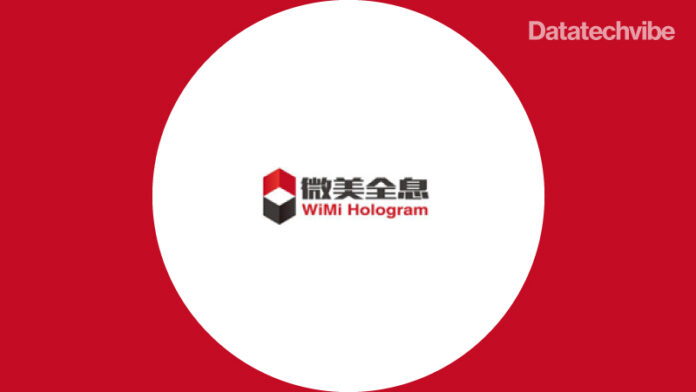WiMi Hologram Cloud Inc., a leading global Hologram Augmented Reality (“AR”) Technology provider, announced that an augmented big data analytics model is proposed to develop an innovative, intelligent, personalised travel recommendation system. WiMi incorporated user preferences, dynamic environments, desired activities, lifestyle experiences, and real-world problems (e.g., costs and distances) to identify and recommend the most appropriate set of destinations for travel. Such a system would dramatically improve the recommendation systems used in existing commercial systems. Existing systems focus primarily on tourist destinations offered in travel packages and fail to meet user-centred and context-driven requirements. In addition, it is difficult to obtain comprehensive and rich information about any travel destination from a single data source.
WiMi developed a prototype of the system using an enhanced big data analytics model that considers five broad categories of data types: images, reviews, climate, social media and location. Optimised and personalised travel recommendations are achieved by leveraging destination-related information such as images of natural environments, reviews of various travel activities, climate data based on the history of weather reports, the social media content of recent events and global news, as well as location information with geospatial distance measurements and user-centred travel constraints. The integration of these data sources provides the ability to gain a more comprehensive and accurate understanding of travel destinations.
The model uses intelligent analysis and state-of-the-art technologies to implement an optimised travel recommendation system. It is implemented based on key technologies such as deep learning, natural language processing(NLP), data mining and machine learning, social media analysis and geographic information system(GIS).
Deep Learning: WiMi’s augmented big data analytics-based intelligence model uses deep learning techniques to analyse and process images and review data. By training neural network models, it is possible to extract information about the natural environment of a destination from images, as well as the quality of tourist activities and user experience from reviews.
NLP: Natural Language Processing is applied to model review data for sentiment analysis and personalisation. This enables the model to understand users’ attitudes and preferences towards tourism activities for better-personalised recommendations.
Data Mining and Machine Learning: The model uses data mining and machine learning algorithms to analyse climate data to understand climate trends and suitable times for travel to destinations. These algorithms can also predict future weather conditions based on historical data for travellers.
Social Media Analysis: Social media data is analysed through algorithms to understand the impact of recent events on travel destinations. This enables the model to provide timely information about travel safety and hot events, helping travellers make informed decisions.
GIS: The management and analysis of geospatial data through GIS technology. Considering geospatial distances and user-specific travel constraints, we can provide travellers with destination recommendations that align with their needs and preferences.
This travel recommendation system provides travellers with more accurate and personalised advice. By synthesising various data sources, we can better understand a destination’s natural environment, tourism activities, climate trends, social media dynamics and global news. This enables travellers to consider all aspects of the decision-making process and make informed travel decisions based on their preferences and practical issues. The development of this travel recommendation system is based on advanced technology and intelligent analysis that offer several key benefits:
Personalised Recommendations: Through in-depth analysis of user preferences and needs, the system is able to recommend the most suitable destinations for each traveller based on their unique interests and preferences. Personalised recommendations provide a more customised experience, enabling travellers to achieve greater satisfaction and enjoy travel fun.
Context-driven: The system not only considers the user’s personal preferences, but also considers dynamic environmental factors. For example, the system can provide travellers with more accurate destination recommendations based on current climate conditions and recent social media developments. Such context-driven recommendations make travel decisions more relevant, increasing reliability and usefulness.
Multi-source Data Integration: The system utilises various data sources, including images, reviews, climate, social media and location information. By integrating these data, the system can provide more comprehensive and multidimensional information about the destination, providing travellers with deeper understanding and decision support. This multi-source data integration approach greatly improves the information quality and reliability of the recommendation system.
Real-time Updates: By monitoring and analysing changes in data sources in real-time, the system can provide timely feedback on the latest destination dynamics and information. This enables travellers to access the latest travel information and make decisions based on the latest situation. The real-time update feature improves the flexibility and adaptability of the system, enabling it to respond to the ever-changing tourism market and user needs.
User Participation: The system also provides a mechanism where travellers can evaluate and provide feedback on the recommendation results. Such a user participation mechanism helps to optimise the recommendation algorithm further and improve the accuracy and user satisfaction of the system.
WiMi’s travel recommendation system based on augmented big data analytical intelligence models provides travellers with more reliable and personalised suggestions. By utilising advanced technologies such as deep learning, natural language processing, data mining, social media analysis and GIS, the system can synthesise various data sources to provide travellers with the most suitable destination recommendations, considering user preferences, dynamic environments and practical issues. Such a system will drive the travel industry toward greater intelligence and personalisation, enhancing travellers’ experience and satisfaction and bringing more business opportunities and competitive advantages to travelling industry participants.









